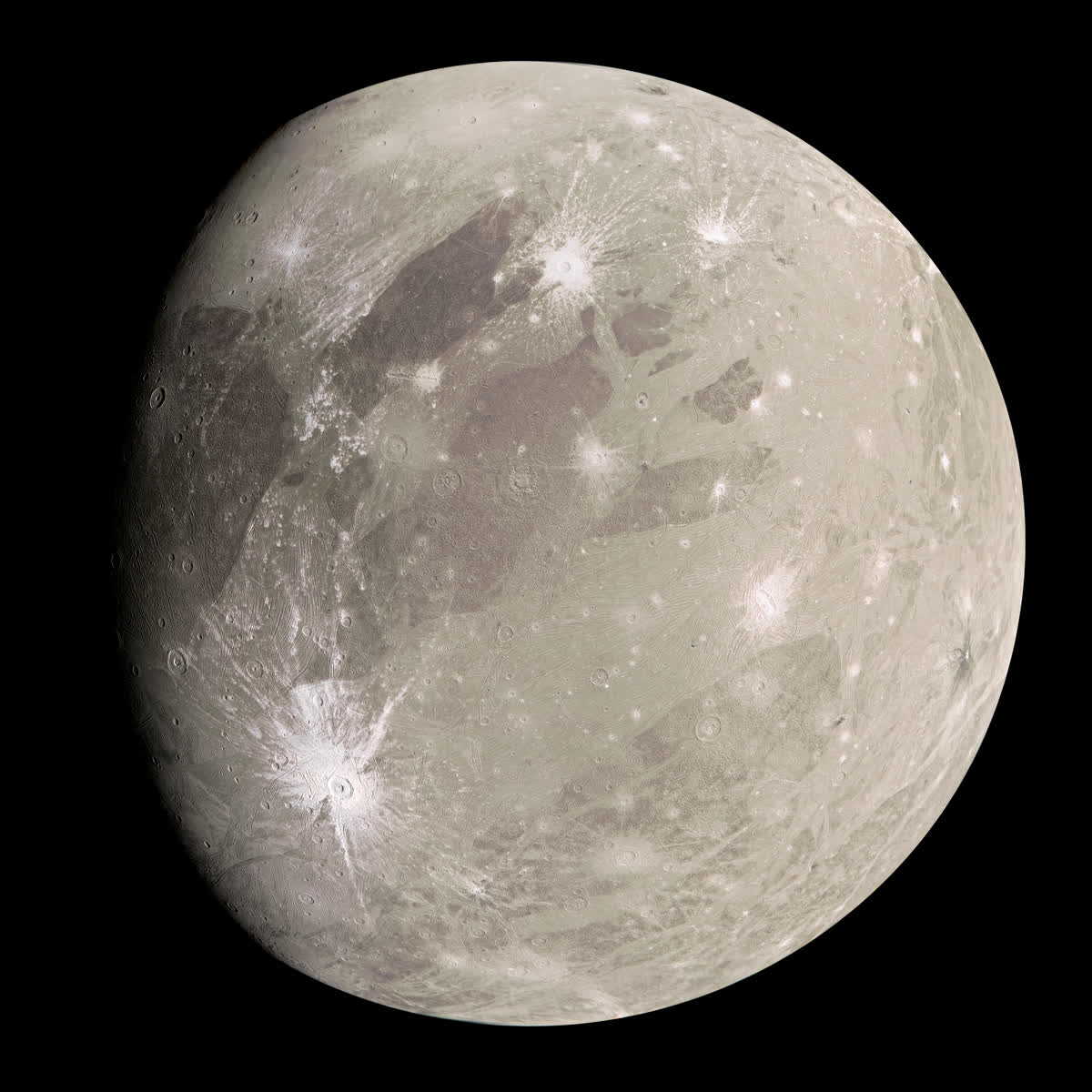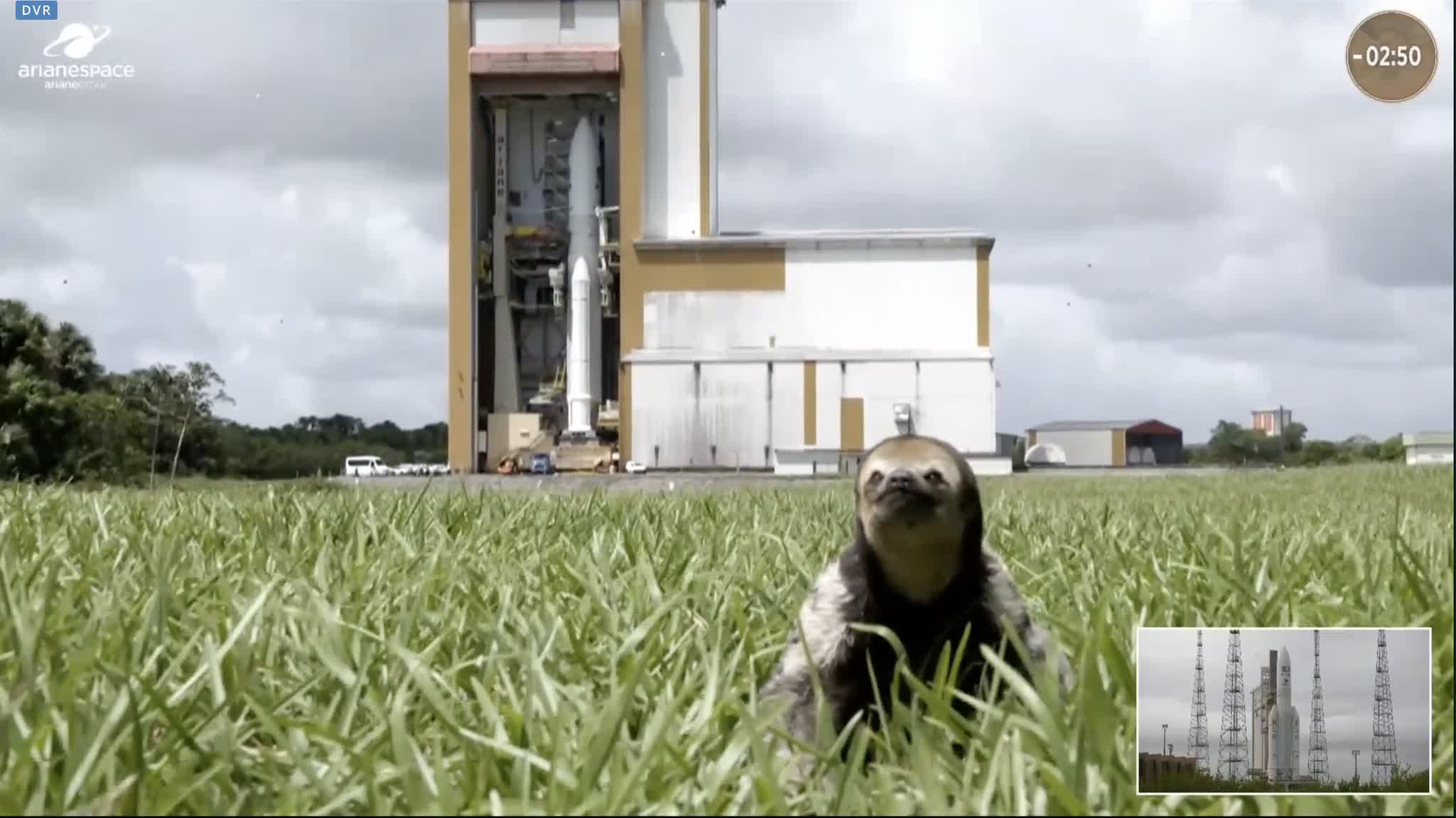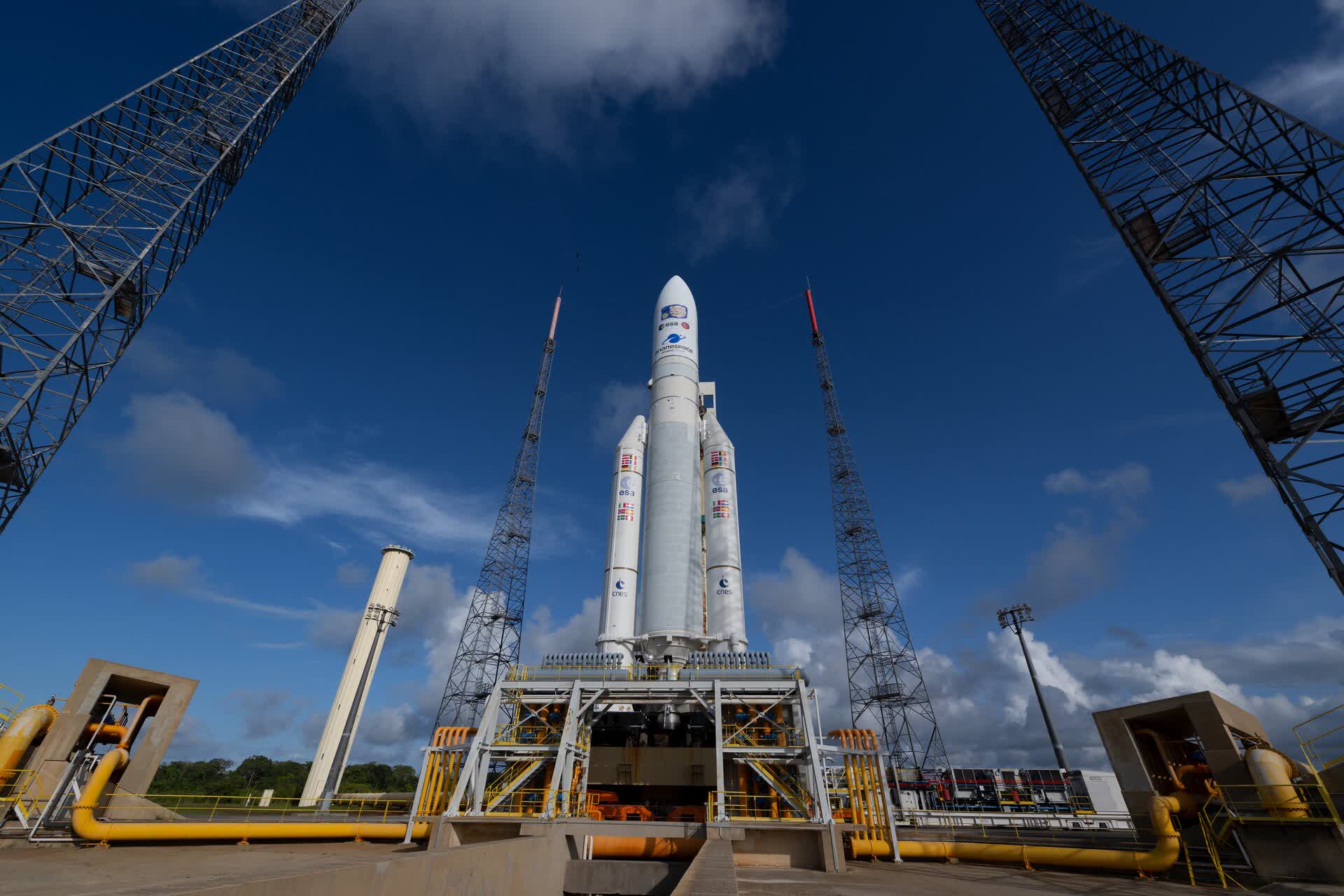Forward-looking: The European Space Agency (ESA) successfully launched its Jupiter Icy Moons Explorer, nicknamed Juice, early Friday morning. The spacecraft will travel to Jupiter to study the gas giant and three of its Galilean moons on its way to orbit Jupiter's largest moon, Ganymede. Scientists expect the probe to reach its initial Jovian destination sometime in 2031.
Juice was launched from Europe's Spaceport in Kourou, French Guiana, on Friday morning. The probe, designed to orbit Jupiter's water-rich moon Ganymede, took off from the spaceport aboard an Arianespace Ariane 5 rocket at 9:14 am local time. The journey will take approximately eight years, which includes several passes of Earth and one of Venus, each providing a gravity assist to sling the craft to its next heading at the proper speed.
Eventually, the craft will orbit Jupiter and conduct flybys on three of the planet's icy moons: Europa, Callisto, and the planet's largest moon, Ganymede. The spacecraft will spend almost four years gathering data about the Jupiter system and its moons before establishing an orbit around Ganymede, where it will remain indefinitely. Once Juice reaches Ganymede, it will officially become the first craft to orbit another planet's moon.

The agency released an interactive Juice Launch Kit detailing the mission's objective, the Juice probe, and the Ariane 5 rocket. The explorer will conduct multiple flybys of Jupiter's icy moons, orbiting as close as 120 miles (200km) from Jupiter's furthest moon, Callisto. The probe will log 21 flybys of Callisto, 12 of Ganymede, and two of Europa. The limited number of Europa trips is primarily due to the planned presence of another probe already studying the moon, NASA's Europa Clipper.
Juice's overarching objective is to gather information to help researchers understand five mysteries of the Jupiter system:
- Why is Ganymede so unique?
- What are ocean worlds like?
- How has Jupiter's complex environment shaped its moons, and vice versa?
- What is a typical gas giant planet like – how did it form, and how does it work?
- Could there be – or ever have been – life in the Jupiter system?

Despite the launch's activity and excitement, one attendee stole Juice's spotlight. Viewers were delighted to spot a furry, seemingly oblivious sloth during ESA's live launch coverage. The slow-moving animal quickly became a favorite on ESA's Twitter feed, where the agency confirmed that the sloth was near another building at the facility and was in no danger whatsoever.
The ESA hopes that data from the probe will expand its understanding of Jupiter's atmosphere and the planet's surrounding system. According to an earlier statement, the agency expects that "by studying it, we can learn more about how the solar system and exoplanetary systems work, how planets form, and how life can emerge under different conditions."
